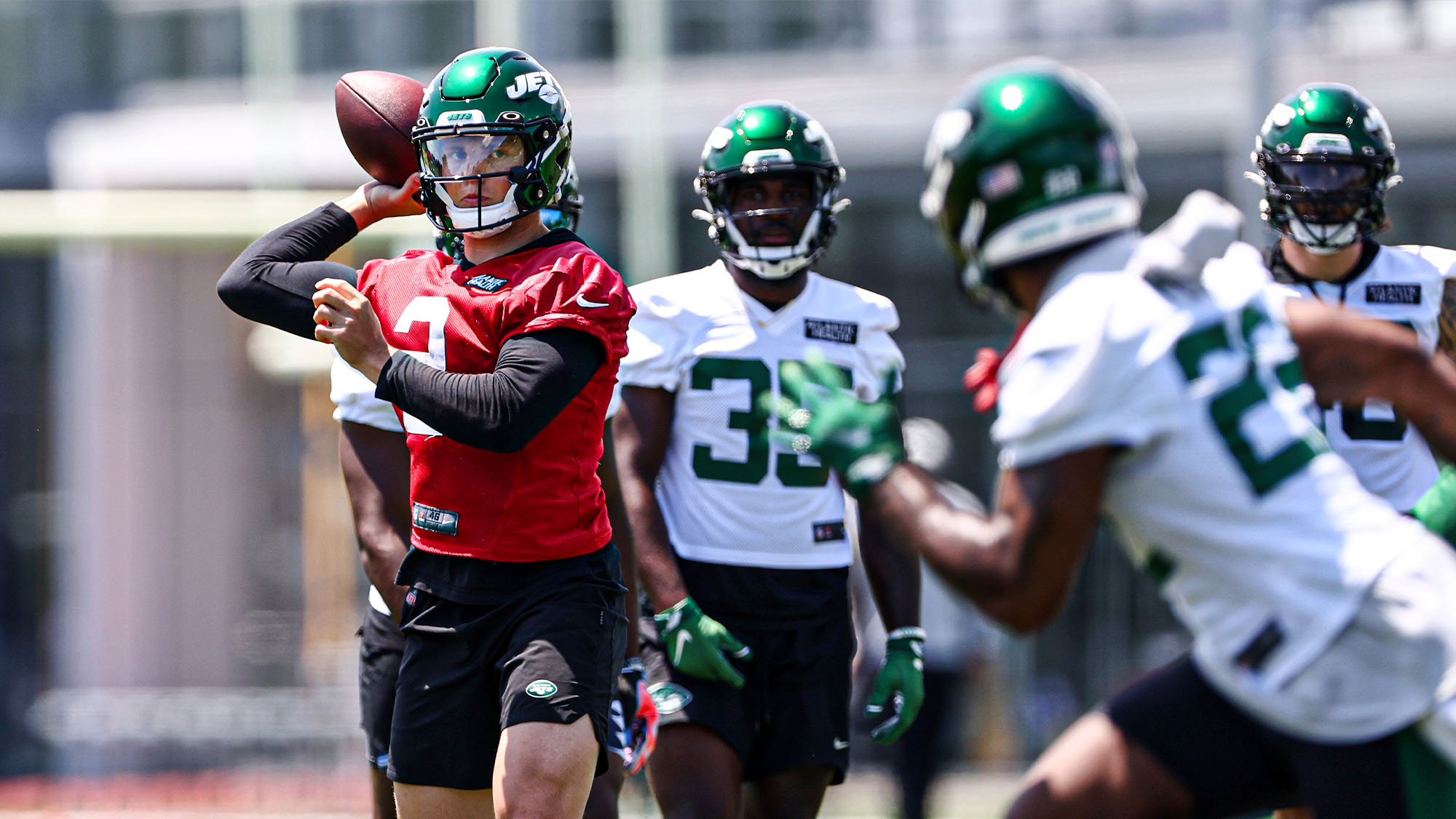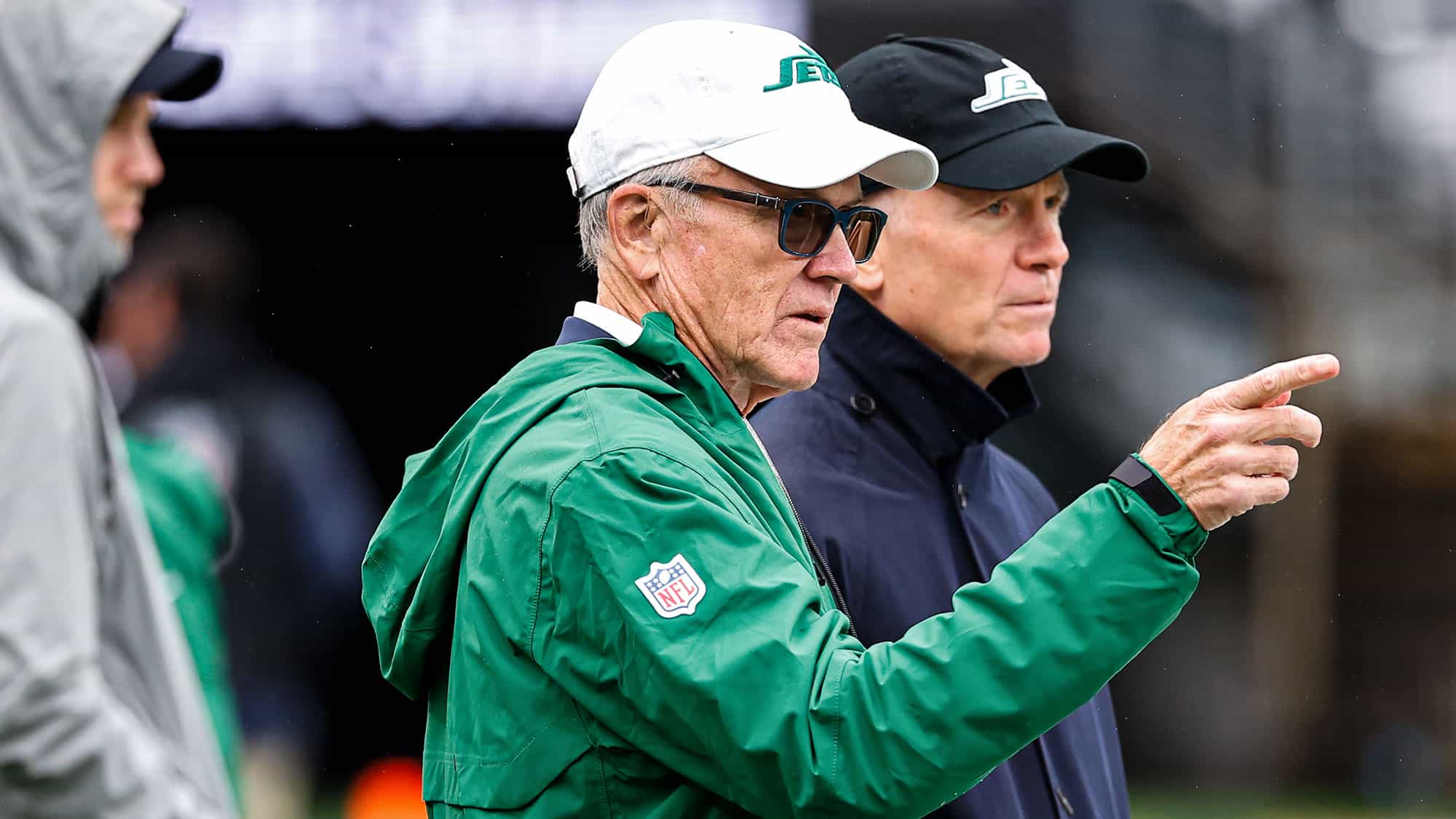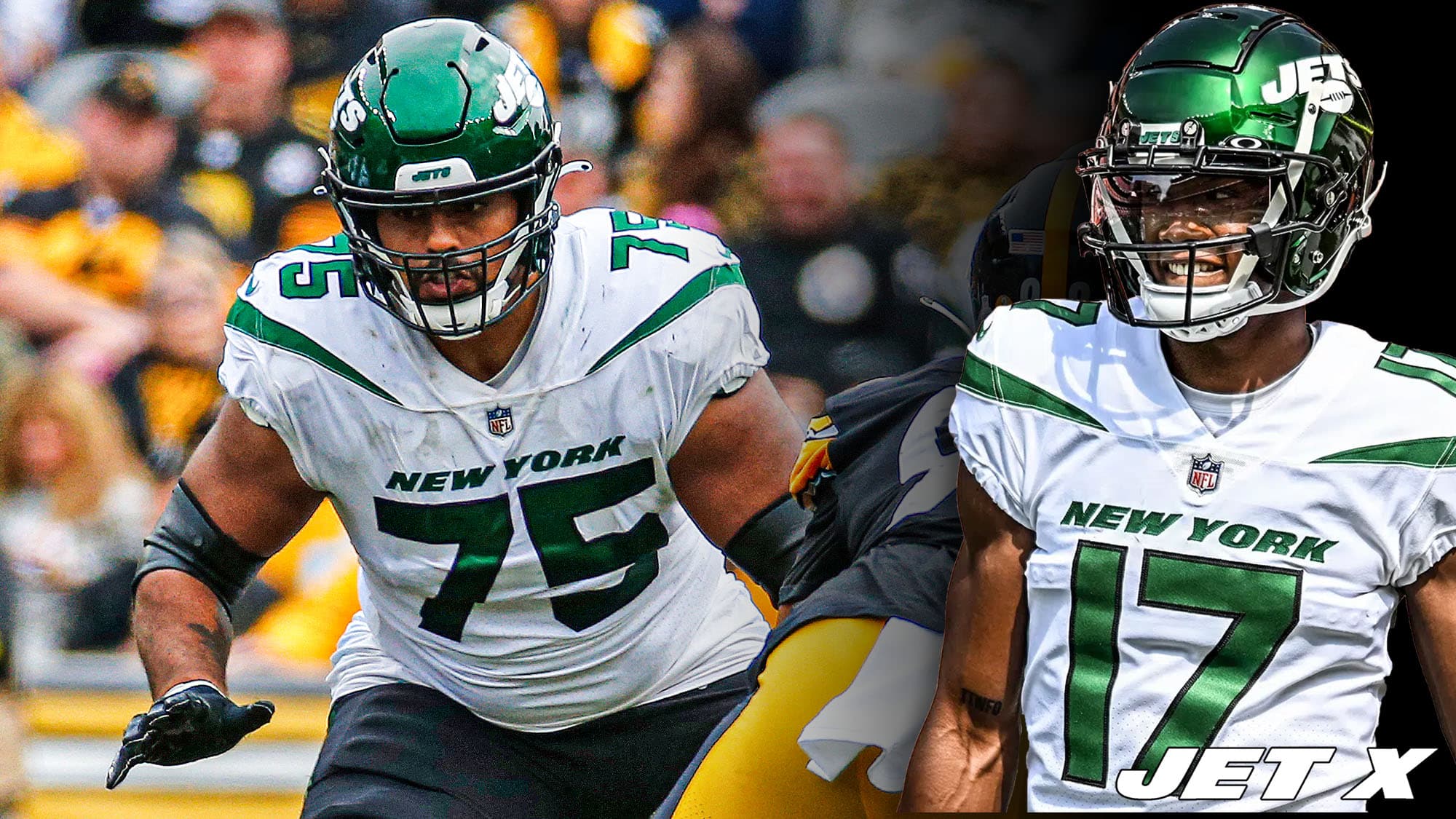How are New York Jets and NFL fans supposed to process what happens on the practice field?
Training camp is a confusing period for NFL fans. It is an exciting point of the calendar thanks to the return of football in the news cycle, but it is also a perplexing time due to the daunting task of trying to deduce which pieces of news are meaningful and which are meaningless.
Oh no! Zach Wilson just threw an interception in red-zone drills! Should I burn my jersey or is he just getting his mistakes out of the way on the practice field?
Yes! Zach Wilson just hit Elijah Moore for an 80-yard touchdown bomb in 11-on-11s! Should I order my Super Bowl tickets now or is it nonsensical to put any stock into this whatsoever?
These are the thoughts that go through an NFL fan’s head when they read each and every tweet that describes the result of a play in practice.
Weeding through the onslaught of training camp reports is a chore for fans. I want to help ease the process.
Let’s go through some of the most important things to remember when evaluating what happens on the practice field during training camp.
DON’T: Treat every report as a perfectly accurate description of what really happened
As film-watching readers of Jets X-Factor know, there are so many layers that go into determining the result of each play on a football field. The final outcome of each rep is the product of a long domino effect.
With this in mind, it’s silly to judge players based merely on the result that is written out in a tweet.
“Zach Wilson completed a short pass to Tyler Conklin.”
What does that tell you? In a vacuum: nothing.
What if Wilson made the wrong read as he checked the ball down instead of hitting a wide-open Elijah Moore deep? What if Wilson’s pass was slightly behind Conklin, costing him yards after the catch?
On the other hand, what if the play was better than it appears in text form? What if Wilson placed the pass perfectly from a compressed pocket and did an outstanding job of going through his progressions, hitting Conklin on his third read after using his eyes to move the linebacker?
From Conklin’s perspective, did he scorch somebody on a route or was he just left wide-open? It would be impressive if he got himself open by beating a defender, but if he was simply left uncovered, it’s probably not a rep that deserves much credit.
We don’t get any of these essential details from the simple play-by-play reports that come out of training camp. Fans just get the result of the play, and as Jet X’s Joe Blewett always says, it’s about the process, not the result. How the result was arrived upon has more predictive value than the result itself.
Another important thing to remember is that the reporters on the practice field are not equipped to provide a perfect description of what happened. They do their best, but there are natural limitations that nobody can overcome.
First off, from where reporters are standing – which is typically on field-level – it’s very hard for them to see everything. They usually do not have a bird’s-eye view. Their vantage point makes it difficult to see a lot of the action, especially on run plays when everybody jumbles together. It’s also tough to see the interior pass protection, which is why tackles get singled out in the media for allowing pressure more often than guards and centers.
Secondly, there are no instant replays available. Media members make a mental note of what they saw and try to describe it from memory as best they can.
Imagine if coaches never got to watch film and simply went off of memory. I don’t think their evaluations would be all that accurate. This is essentially what you’re getting in training camp tweets.
Different reporters can see a play differently, and it cannot be proven whose description is closer to the truth without watching a replay. Or, a play that is widely viewed as good or bad could have actually been the opposite if everyone got to watch it again.
If something unquestionably glaring happens – let’s say Zach Wilson throws a wide-open slant in the dirt or Zach Wilson throws a frozen rope down the sideline to Elijah Moore against tight coverage – then, of course, we should put stock into that. No replays or deep analysis are needed when somebody makes a play that is obviously fantastic or obviously terrible.
But for the most part, it is important to take each report of a training camp result with a grain of salt. Keep in mind how much of the meat is being left out. You are only getting a small taste of what transpired.
DO: Take note if somebody is consistently awesome or consistently brutal
I think the best way to evaluate training camp is to search for consistent trends. For the most part, every player will have their good days and their bad days. But if someone is consistently landing on one end of the scale, it is worth noting.
Elijah Moore was widely touted as the best player in training camp for the Jets last year. He stood out with a highlight play almost every day.
That turned out to be a sign of things to come. Looking solely at his game film (ignoring stretches of lackluster statistical production that largely were not his fault), Moore had a case to be the Jets’ best individual performer in the 2021 season. He was excellent. His incredibly consistent play on the practice field was a sign of things to come.
Denzel Mims had a tumultuous training camp in 2021. He quickly slid down the Jets’ depth chart and was frequently the subject of negative reviews from the media. It was rare to hear something good about him. Day after day, there was new noise about his struggles.
At the time, many fans scoffed at the coverage of Mims and thought he was being criticized too harshly. But it all turned out to be a warning signal. Mims ended up having an extremely disappointing season that featured long stretches in the Jets’ doghouse and woeful production in the rare instances when he did get a chance.
If someone continues producing the same result on an extreme end of the spectrum – I’m talking really good or really bad, not just pretty good or pretty bad – I’d take note.
DON’T: Overanalyze trench play in non-padded practices
One of the most important rules of evaluating practice is to consider whether the players have their pads on. If the pads are off, the things that are happening on the field are not close enough to the real game for us to put too much stock into them.
The Jets have been practicing without pads over the past two days. On Thursday, the primary headline of practice was how much the defensive line was dominating the offensive line.
This is to be expected in non-padded practices. Stopping NFL pass-rushers in a limited-contact, non-padded practice is a Herculean task for blockers. Robert Saleh said it himself on Thursday.
Robert Saleh on the O-Line struggling today: “Anytime you don’t have pads D-Line is going to have an edge over the O-Line.” #Jets
— Zack Rosenblatt (@ZackBlatt) July 28, 2022
Wait until the pads come on to start paying attention to what happens at the line of scrimmage.
DO: Keep the same energy for good and bad occurrences
Impartiality is an essential element of analysis. You have to take bias out of the equation and treat all events the same.
How much stock you put into training camp is up to you, but wherever you land on the spectrum, just make sure to react the same way to bad events as good events.
If you are touting someone as a future star because of their standout performance in camp, then make sure you see the same predictive value for the player who is struggling. Otherwise, you’re just being biased. Picking and choosing what to believe is the worst thing you can do.
The same goes for the other side of the coin. If “it’s only training camp” when a crucial young player is having a rough time, then “it’s only training camp” when another crucial young player is excelling.
Either side of the debate is fine. Just make sure not to change your stance on the importance of training camp to fit what you want to be true. Doing so will only lead to disappointment.
DON’T: Worry about training camp stats for quarterbacks
Evaluating quarterbacks based on their box-score stats is already a silly idea in real games. Doing the same thing in training camp is just downright nonsense.
Drops, pressure, route-running, play-calling – all of these factors play a huge role in a QB’s statistical performance. It’s hard enough to adjust a QB’s stats based on the quality of his support in a real game that can be rewatched and includes plenty of data. Forget about trying to do that in a training camp practice that cannot be rewatched and includes no data.
We also do not know what the coaches want the QB to do in a given session. Teams are not necessarily playing to win on the practice field. They’re trying to improve. So, a QB could go into a session of red-zone drills with instruction from the coaching staff to be aggressive looking for routes over the middle of the field. Or, they could instruct him to play it safe and quickly get rid of the ball if trouble arrives.
Maybe in a certain session of 11-on-11 team drills, the Jets give Zach Wilson the instruction to hang onto the ball and let the concepts play out so he can get a visual feel for how they look on the field in real-time. If he plays backyard football and bails out of the pocket too quickly, he might be able to make a cool play for the Jets to post on social media, but he’ll miss out on getting the valuable experience that he needs when it comes to mastering the playbook.
All of this is to say that the QB probably makes a lot of decisions in practice that he would not make in a real game. The QB is out there to get his feet wet, learn the offense, and stockpile mental reps – not to methodically shred the defense and put up cute stats.
DON’T: Get too excited when somebody says they are in the best shape of their life
If I had a dollar for every time an athlete said they are in “the best shape of their life”, I’d have purchased the Jets from Woody Johnson long ago. (I’d currently be working hard to get the team its own stadium and to bring back that sleek 1980s logo.)
Try not to get too excited when players spew cliches about their physical shape. We’ve been down this road before. It doesn’t mean anything. Move along.
Now, I’m not saying that we should never listen to what is said at a press conference. That brings me to our next point.
DO: Look for quotes and physical developments that stand out from the pack
The key to analyzing press-conference chatter is to look for things that stand out.
Ninety-nine percent of what’s said is peeled straight from “100 Cookie-Cutter Non-Answers To Give In A Press Conference” (written by Bill Belichick), but every once in a blue moon, something of real value is spoken.
When Corey Davis says that he has lost 10 to 15 pounds and shows up to the podium looking noticeably more slender, you should take note. It’s a real piece of information that will have a tangible effect on Davis’s future.
WR Corey Davis says he did a lot of running in the offseason. Focused on conditioning and stamina.
Lost 10-15 pounds in the offseason and is at about 205 right now. Says his joints thank him. #Jets pic.twitter.com/iLU671TRDX
— Dennis Waszak Jr. (@DWAZ73) July 28, 2022
I’m looking for the real stuff. What are the facts that I can take away? Where is the detailed insight? These are the things worth listening to.
DO: Look for “iron sharpens iron” moments
Newton’s third law states that every action has an equal and opposite reaction. This is one of the most glaring dilemmas of training camp. Every time a player on your favorite team makes a good play, there is another player on your favorite team who was the victim of that positive result.
When a receiver makes a great catch, the excitement is neutralized by the fact that it also means somebody was beaten in coverage. When a defender makes an interception, it’s overshadowed by the fact that the quarterback just turned the ball over.
I try to work around this phenomenon by searching for plays in which both sides put in a strong effort, regardless of the result. Remember the Joe Blewett theory: process over results. Yes, somebody has to be the victim on every play from a results standpoint, but that doesn’t mean the victim always puts in a bad effort.
A player can do a phenomenal job on a rep and still lose if his opponent just happened to be even better. These are the reps you want to look for: the “iron sharpens iron” moments.
This clip shared by the New York Jets’ Twitter account is the perfect example of a strong all-around training camp rep.
.@ZachWilson 🚀 @e_moore03 pic.twitter.com/mBp4DU6UMS
— New York Jets (@nyjets) July 28, 2022
Zach Wilson makes a tight-window throw. Elijah Moore makes an outstanding catch. And, although D.J. Reed is the victim in coverage, you still have to love his effort on this rep. His coverage was excellent. He forced Wilson and Moore to make outstanding plays in order to execute this completion.
It can be a little worrisome when a team is consistently getting lopsided results on the practice field, but when they get tightly-contested battles like the one above, it’s a great thing.
The training camp evaluation conundrum is a complex topic
For many of the reasons we discussed above, it is extremely difficult to evaluate what goes down in an NFL training camp. What should we care about? What is completely meaningless? Answering these questions is impossible without concrete data and information to help us search for trends.
And, of course, we’re never going to have data from training camp. All the NFL community will ever have is the secondhand eye test, passed on from the media to the outside world in the form of articles and tweets.
Historians have stated that figuring out what to make of NFL training camp news is arguably more difficult than deciphering Egyptian hieroglyphics, but the rules I listed in this article have helped me tread water during this confounding period of the NFL calendar in which player evaluation is at its most puzzling.
I hope these rules can help you evaluate training camp through a more disciplined lens. If you disagree with them, though, that’s perfectly fine. This is training camp we’re talking about. Everything is open for debate.















Don’t forget to remember the Jets’ beat has a penchant to just churn story lines that fit their bias. They intentionally look for the low hanging fruit and ask dumb questions to support their click rate. Like Costello (who I actually think is one of the “more fair” guys) asking Zach about social media. Looking for gossip not news. Clearly, the entire beat is void of any valid sources and really don’t get anything more than we can get just by watching the player interviews on the Jets’ website. All, they really do is take quotes from those sessions and put them in print. So DON’T assume the beat writers have any additional means of gathering info. Anybody can write: “people in the building” for all we know it could be a custodian.